




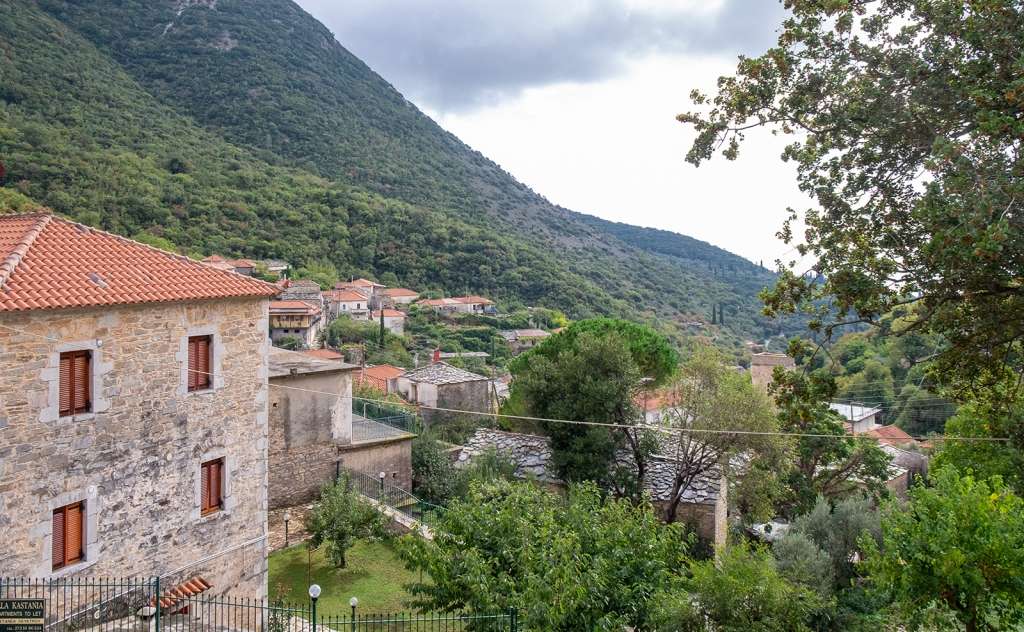
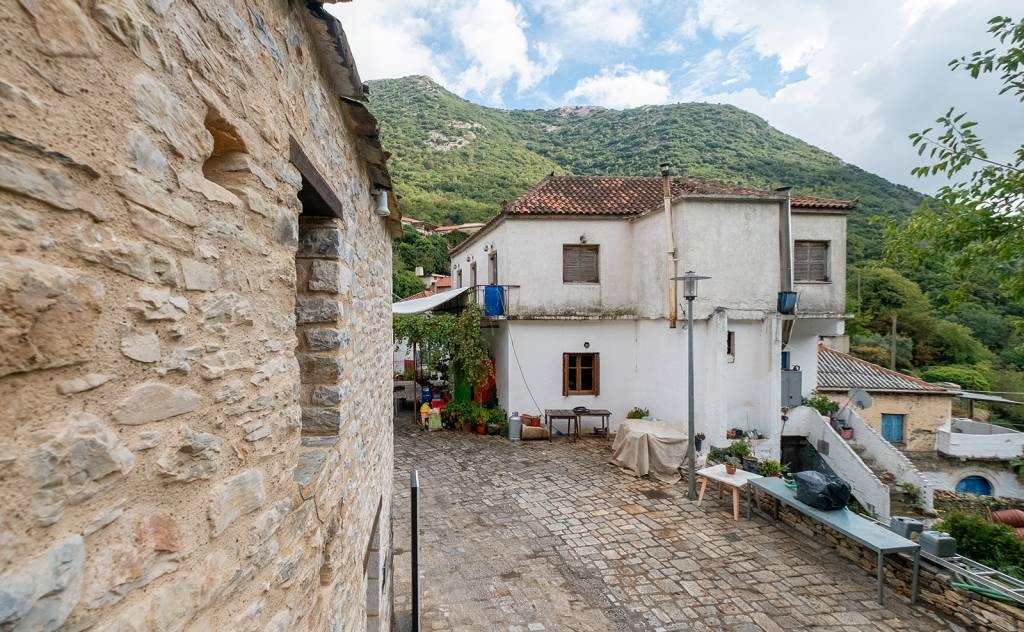
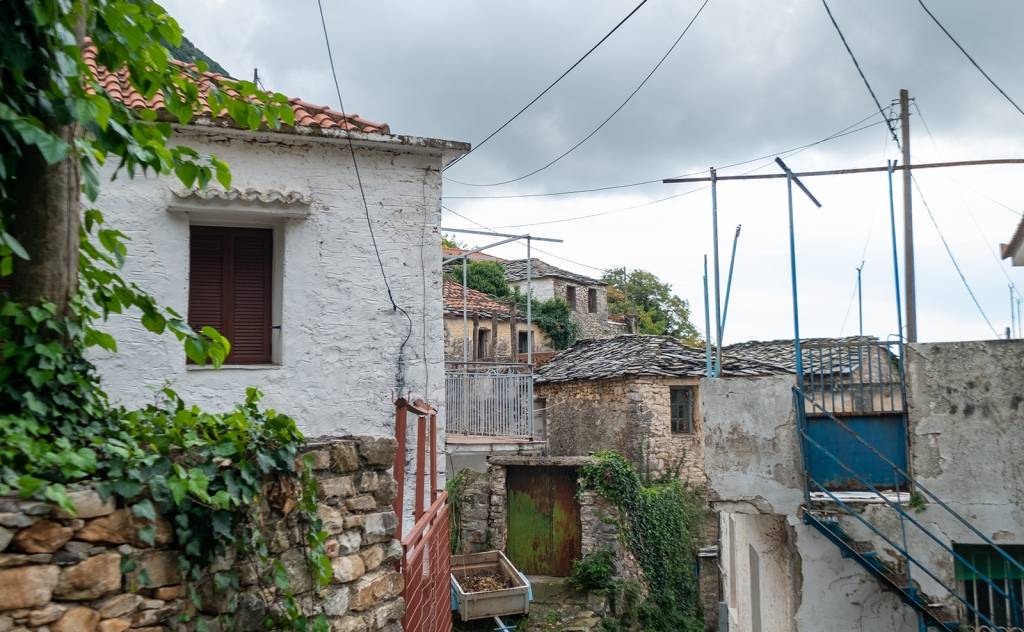
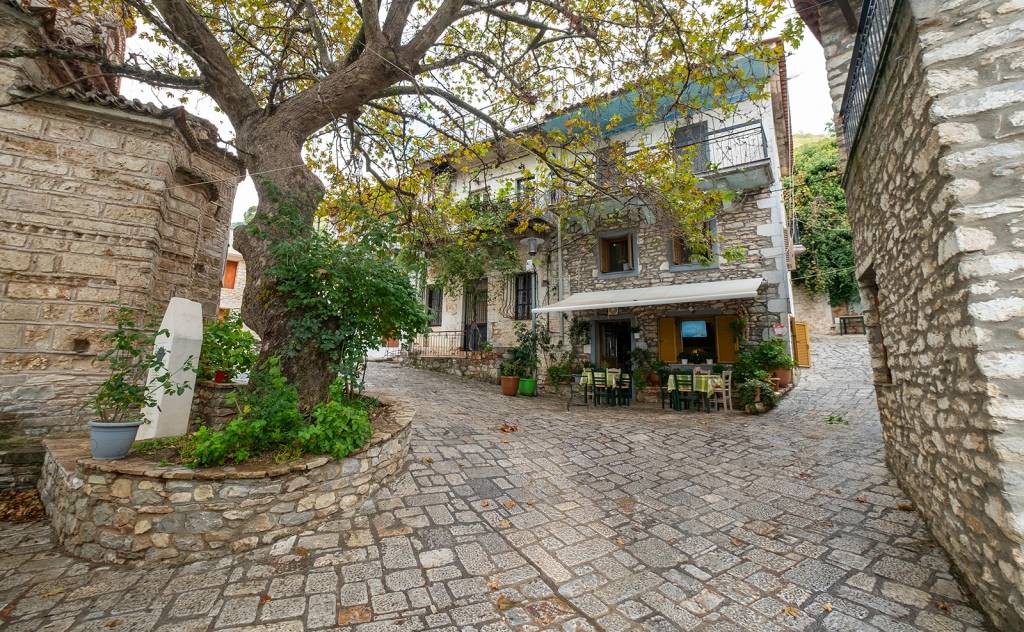
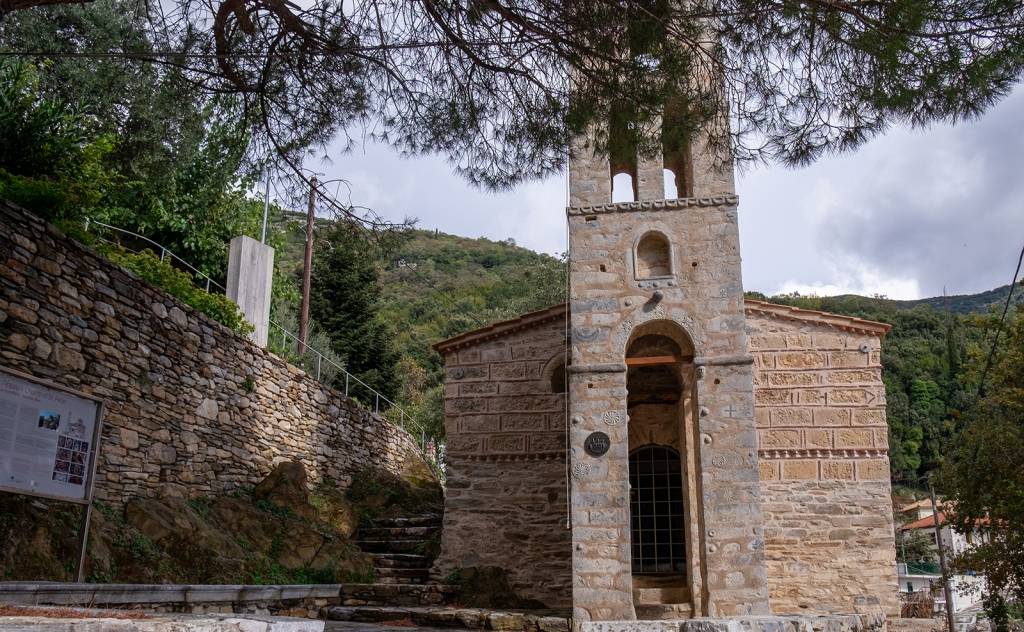
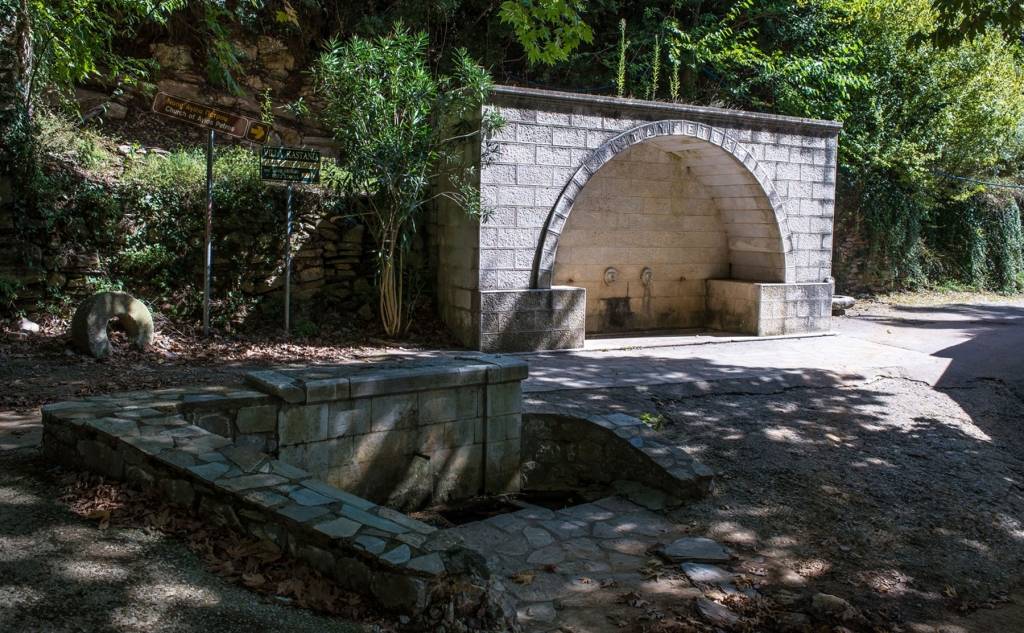
The mountainous, picturesque village of Kastania (Kastanea or Megali Kastania) is built at an altitude of 560 metres, below the Mavrovouna peak of Mount Taygetos, among oak and walnut trees. The village is one of the oldest settlements of the Messenian Mani, and as a natural fortress, it remains invisible even from a close distance. Kastania is 15 kilometres from Kardamyli and 50 kilometres from Kalamata.
During the 13th century, intense building activity was noted in the village, perhaps connected to the gradual administrative dependence of the area on the Despotate of Moreas, while most of the private houses date back to the 17th and 18th centuries.
In Kastania, visitors can see the historic Captain Dourakis’ five-storey Tower, which provided shelter to Theodoros Kolokotronis during the great persecution of thieves (1803-1806) before his transfer to Elafonissos in 1806. The stone-built tower complex (about 15 metres high) dates back to the 18th century and has been declared a protected monument by the Ministry of Culture.
In the entire village, the unique roofs of the houses made of stone slabs of natural stone of the area stand out, while the fountain with the giant walnut trees dominates the square. Also, of all the villages in Mani, Kastania has the most Byzantine churches (10 in total), of which the following stand out: The church of Agios Georgios at the entrance of the village (13th century), Agioi Apostoloi, Agios Petros ( 12th century), Agios Ioannis the Forerunner (11th-12th century) and Agios Nikolaos Trikabanos (13th century). The patron saint church of the village is Panagia (the Virgin Mary), and the renovated church of the Dormition (11th century), which is celebrated on August 15th with a doxology and a festival in the square. Finally, the Late Byzantine temple of Ai-Stratigos (Taxiarchis), of impressive architecture, is 2 kilometres southwest of the village. The temple is decorated with frescoes of fine art, of which the extremely rare depiction of the three faces of the Holy Trinity stands out.